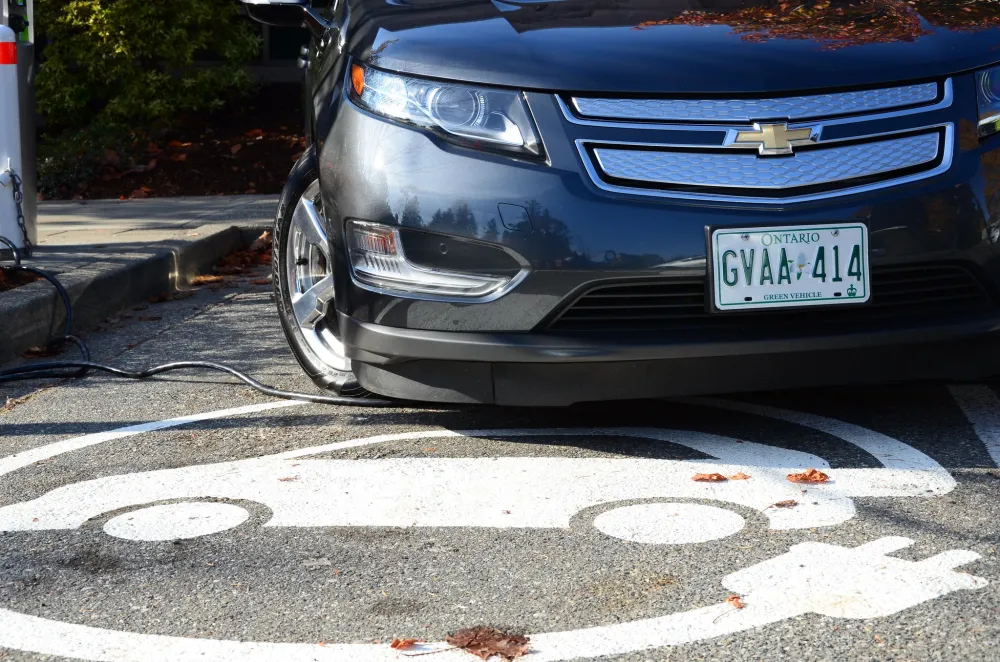Within the Inflation Reduction Act (IRA) — a US$369 billion policy package to decarbonize the American economy — is an innovative approach to purchase incentives for electric vehicles (EVs): income cut-off provisions.
This policy tool can sharpen the focus of purchase incentives, such that they ensure the broadest public benefit. Limiting incentives to those below an income cut-off means that tax dollars are not spent supporting the wealthy; instead, more funding from that program is available to middle-and low-income buyers.
It’s increasingly accepted that increasing the use of electric vehicles is vital for lowering climate pollution. In Canada, the transportation sector generates about a quarter of greenhouse gas emissions (GHGs), second only (in Canada) to the GHGs emitted during the production of oil and gas.
One barrier to widespread adoption of EVs has been their higher upfront cost compared to equivalent internal combustion engine vehicles. But over the vehicle lifetime, electric vehicles are consistently found to be easier and cheaper to maintain and much more economical to fuel.
Publicly funded purchase incentives at both a federal and, sometimes, provincial level, help overcome this price disparity. Canada currently offers purchase incentives from the federal government as well as from B.C., Quebec, Prince Edward Island, Nova Scotia, New Brunswick, Newfoundland and Labrador, Yukon and Northwest Territories.
Turning a jackhammer into a sewing needle
Data shows government purchase incentive programs for passenger EVs has contributed to the significant year-over-year growth in new registrations in Canada. However, these incentives can offer the purchaser anywhere between $5,000 and $12,000 dollars off the ticket price of a qualifying EV — often regardless of the purchaser’s need or ability to pay. It is a blunt instrument.
Looking to the U.S., incentives in the IRA have refined the federal policy, turning a jackhammer into a sewing needle: instead of returning a standard amount to purchasers, there is now a US$7,500 tax rebate with an income cut-off. The IRA limits the incentive to households with joint incomes under US$300,000 or individuals under US$150,000 and limits the incentive to trucks, vans, and SUVs under US$80,000 and all other passenger vehicles under US$55,000. The IRA also introduces a tax credit of up to US$4,000 or 30 per cent for the purchase of a used EV and includes an income cut -off of US$75,000 for an individual or US$150,000 for a household.
Income considerations as part of EV purchase incentives are becoming more common. The federal program as outlined in the IRA joins the precedent set by states like California, Oregon and Pennsylvania (to name a few) who have implemented this refined policy.
And in Canada, in 2022, British Columbia introduced the country’s first income requirements for accessing EV purchase incentives. B.C.’s provincial program is now limited to those with annual incomes of less than $100,001 (individuals) and $165,000 (households). Given the total spending allocated to this type of program, income cut-offs means that more incentives are available to those who meet the income requirements.
Purchase incentive programs can target lower-income households
Income eligibility restrictions increase the efficiency of EV purchase incentive programs by focusing subsidies on the those who cannot afford to transition to an EV without financial support. Evidence suggests that purchase incentive programs that target lower-income households can be two times more cost-effective than programs without income requirements. This is because tax dollars are no longer spent on supporting those who could purchase an EV regardless of incentives, and public dollars are funnelled into supporting public need.
Extending incentive programs to include used vehicles, as is done in the Atlantic provinces and the IRA, also support the switch to EVs by leveling the cost of used EVs. This is particularly true when the used vehicle market is relatively expensive as it is today.
Ontario’s Throne Speech in August rightly notes that the province has made significant investments in EV manufacturing. Yet Ontario does not currently provide purchase incentives for EVs. As a result, the province lags both B.C. and Quebec in new EV registrations. Finding a middle ground by offering EV purchase incentives with an income cut-off would support the EV manufacturing industry in Ontario while not unnecessarily benefiting the wealthy.
The Canadian federal government and provinces should consider adding income requirements to existing incentives programs for both new and used EVs. This could help develop these programs where they don’t already exist. This will not only respond to one of the most common points of criticism of EV incentives, but it will also ensure that more Canadians have the opportunity, sooner, to adopt EVs.








